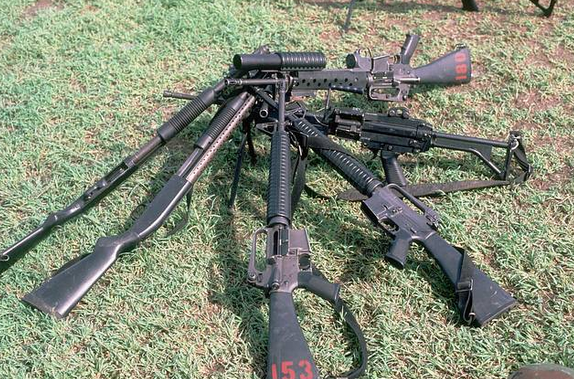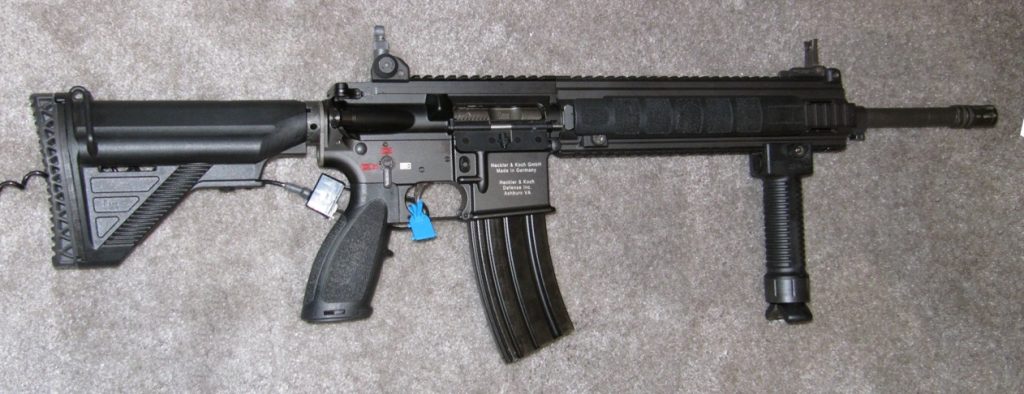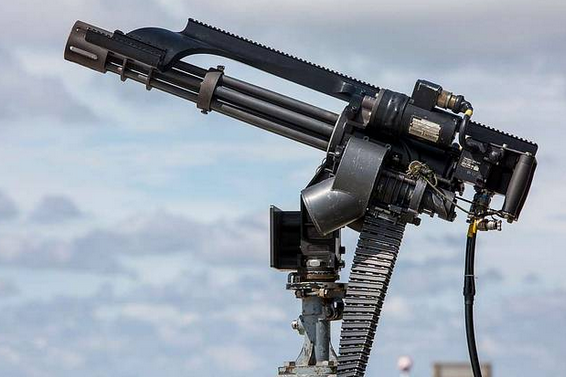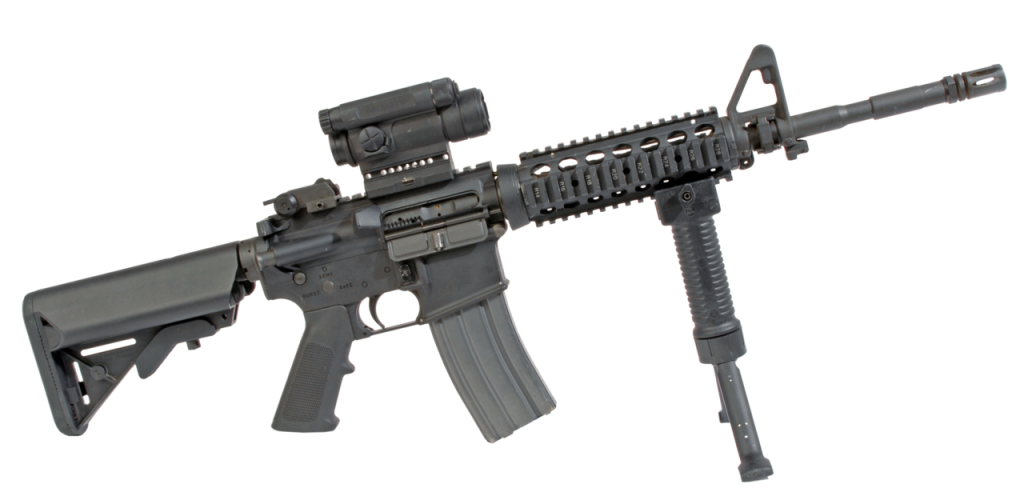
Can one rifle change the way an entire branch fights? For the United States Marine Corps, the answer has been yes-more than once. Over 249 years, the Corps has updated its arsenal to keep up with a changing cast of threats from jungle ambushes to urban firefights. Each weapon speaks to a story of battlefield need and technological innovation in relentless pursuit of tactical superiority.
Today’s Marines train on everything from century-old legends to leading-edge systems some precision tools for long-range engagements and others brute-force instruments for close-quarters combat. Together, they form a combat toolkit-a means of providing decisive firepower in any environment. This list gives a deeper look at nine of the most important weapons in Marine hands to show just how each helps create that Corps advantage in combat.

1. M27 Infantry Automatic Rifle
Adopted in 2011, the M27 Infantry Automatic Rifle replaced the M249 SAW in many infantry roles, marrying the accuracy of a rifle to the suppressive capability of an automatic weapon. Based on the HK416, it uses a short-stroke gas piston system for cleaner, cooler operation, reducing malfunctions in harsh conditions. At an approximate weight of 12.67 lbs in combat configuration, it delivers sustained fire at 700–850 rpm with a standard 30-round magazine.
Marines say the M27’s free-floating barrel and select-fire capability make it deadly accurate out to 550 meters. The ergonomic controls mirror the M16A4 and M4, minimizing retraining. As HK’s Reidsma noted, “It’s neat to watch the Marines’ eyes light up a lot of first round hits on targets at long distance.” The rifle’s durability major components lasting over 15,000 rounds cements its place as the Corps’ primary infantry weapon.

2. M1911 .45 ACP Pistol
First issued in 1911, John Browning’s .45 ACP sidearm remains a Marine favorite for close-quarters battle. Conceived after U.S. troops in the Philippines found .38-caliber revolvers inadequate against Moro warriors, the M1911 proved itself in World War I when Sgt. Alvin York used it to stop a bayonet charge.
Modern variants include the M45A1 Close Quarter Battle Pistol, outfitted with Picatinny rails, night sights, and a corrosion-resistant finish. While definitely of an older design, the stopping power and reliability of the M1911 under abuse firing after being submerged or filled with sand remain relevant for MARSOC and expeditionary units.

3. Benelli M4 Combat Shotgun
The Benelli M4, which is adopted in 1999 as the M1014, is the Corps go-to semi-auto shotgun. Its Auto-Regulating Gas-Operated system utilizes dual short-stroke pistons for simplicity and reliability, cycling both buckshot and slugs with ease. Ruggedly built to withstand military-grade abuse, it remains effective in extreme environments, from desert heat to maritime humidity.
Boasting ghost ring sights and a Picatinny rail, the military configuration M4 offers devastating close-range firepower with a 7+1 capacity. Federal reduced-recoil 00-buck loads pattern tightly out to 25 yards, making it a proven breaching and anti-personnel tool.

4. GAU-17/A Minigun
The GAU-17/A is the USMC’s flexible-mount version of the M134 Minigun, a six-barrel Gatling gun that fires 7.62x51mm NATO rounds at either 2,000 or 4,000 rpm selectively. Originally developed under “Project Vulcan,” it transitioned from aircraft cannons into helicopter and boat mounts, mainly for suppression and extraction.
The GAU-17/A mounted on UH-1N Hueys, SOC-R boats, and special operations platforms can sustain fire from belts holding up to 4,400 rounds. With its electrically driven barrels and titanium flash suppressor, it provides a superior performance in clearing cover and overwhelming enemy positions.

5. BGM-71 TOW Missile System
The TOW missile system is tube-launched, optically tracked, wire-guided. The weapon has been in service since 1970 and remains a staple of Marine anti-armor capability. It destroys tanks, bunkers, and fortifications out to 12,303 feet.
The range of modern variants, like the TOW 2B Aero, extends to 4.5 km, while guidance via wireless RF avoids the vulnerable wire link altogether. Equipped with tandem or top-attack warheads, the system is countermeasure-resistant and has platform integration on vehicles, tripods, and helicopters for versatile deployment.

6. Barrett M82 Anti-Materiel Rifle
The Barrett M82, fielded in the early 1990s, provides Marines with the capability to disable vehicles, equipment, and fortified positions at extreme range. Chambered in .50 BMG, it provides massive kinetic energy out to 2,000 meters. It is a semi-automatic, recoil-operated rifle that provides for quick, multiple follow-up shots. The precision of the rifle makes it effective in both personnel and materiel targets. It has been used to destroy IEDs from a safe distance and also to penetrate barriers that smaller calibers cannot breach in both Iraq and Afghanistan.

7. FN SCAR (Mk 16 / Mk 17)
The FN SCAR entered Marine service in 2009 it was a modular weapon system in both 5.56x45mm and 7.62x51mm NATO configurations. Reliability in any environment is attained through its gas-operated, rotating bolt system, while quick-change barrels facilitate mission-specific set-ups. With effective ranges reaching 1,640 feet, the SCAR fills roles from assault rifle to the designated marksman weapon. This adaptability makes it valuable for special operations and units needing a single platform for multiple engagement profiles.

8. M240 General Purpose Machine Gun
Since 1977, the M240 has been the Corps’ workhorse medium machine gun. Belt-fed and gas-operated, it fires 7.62x51mm NATO rounds at 550-950 rpm, with an effective range of 5,905 feet. Its durability and sustained fire capability make it ideal both for suppressing enemy positions and defending perimeters. Variants serve on tripods, vehicle mounts, and aircraft, ensuring that Marines have the firepower they need in both offensive and defensive roles.

9. M4 Carbine
Adopted in 1994, the M4 Carbine offers a lighter, more compact alternative to the M16A4. Chambered in 5.56x45mm NATO, it provides effective fire out to 500 meters with select-fire capability. Its collapsible stock and shorter barrel improve maneuverability in urban and close-quarters combat, while compatibility with optics, lasers, and grenade launchers make it a versatile platform. Though the M27 has replaced it in many infantry roles, the M4 remains in service across support and specialized units. From the precision of the M27 to the brute force of the GAU-17/A, the Marine Corps arsenal reflects a balance between tradition and innovation.
Weapons such as the M1911 and M240 prove that proven designs can endure for decades, while systems such as the TOW and SCAR show how adaptability keeps Marines ahead of evolving threats. Standing together, these arms will ensure that when the Corps is called upon, it brings with it a mix of firepower, accuracy, and dependability unmatched on the modern battlefield.

